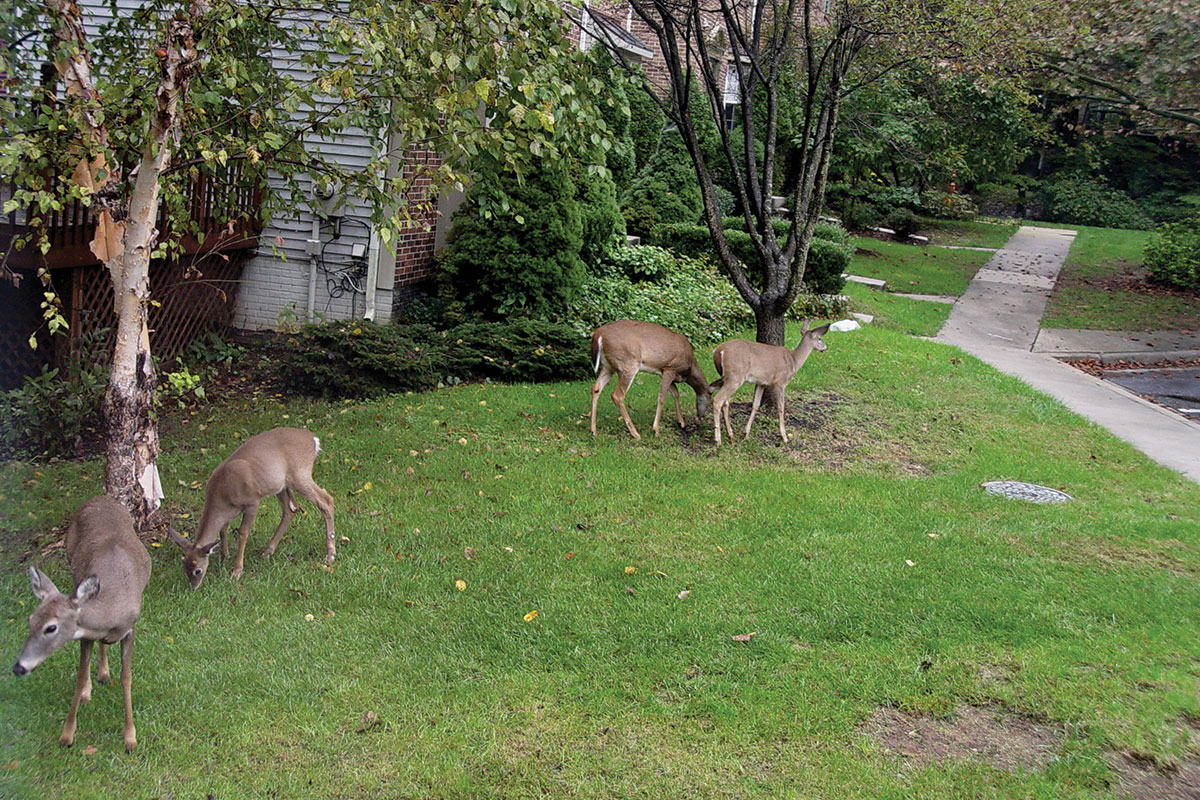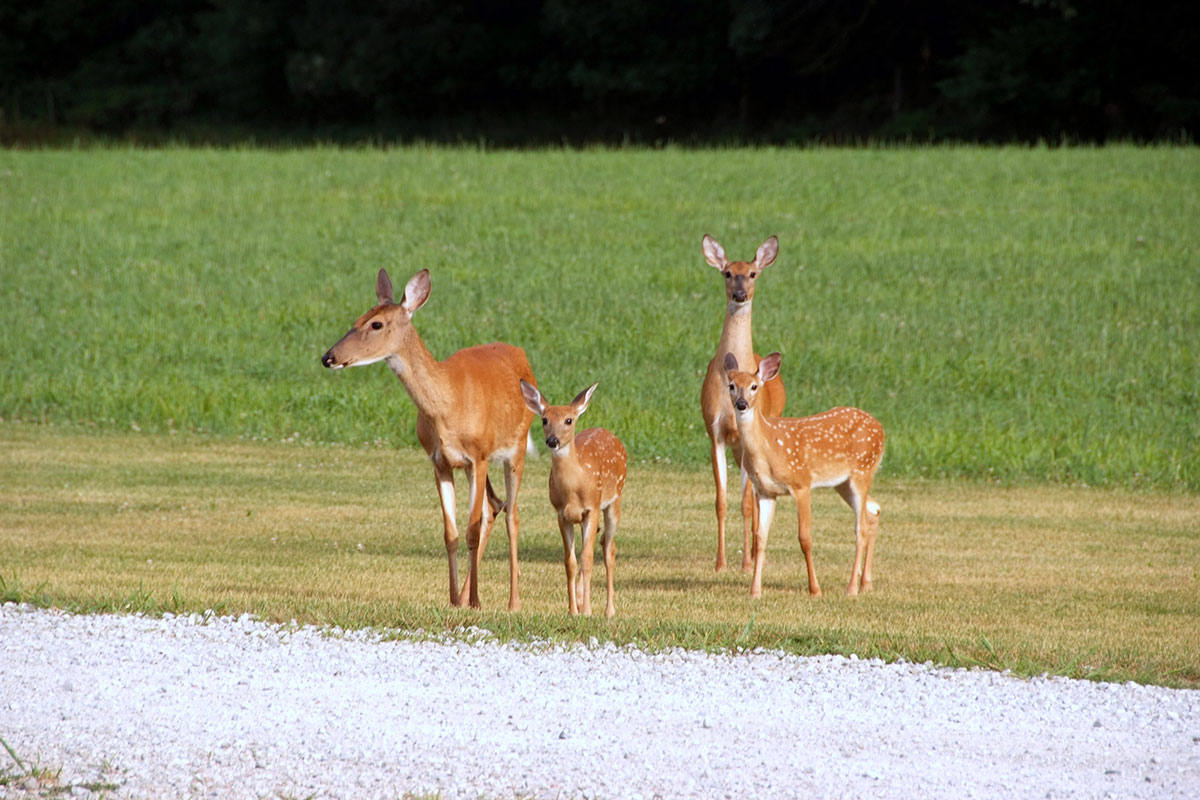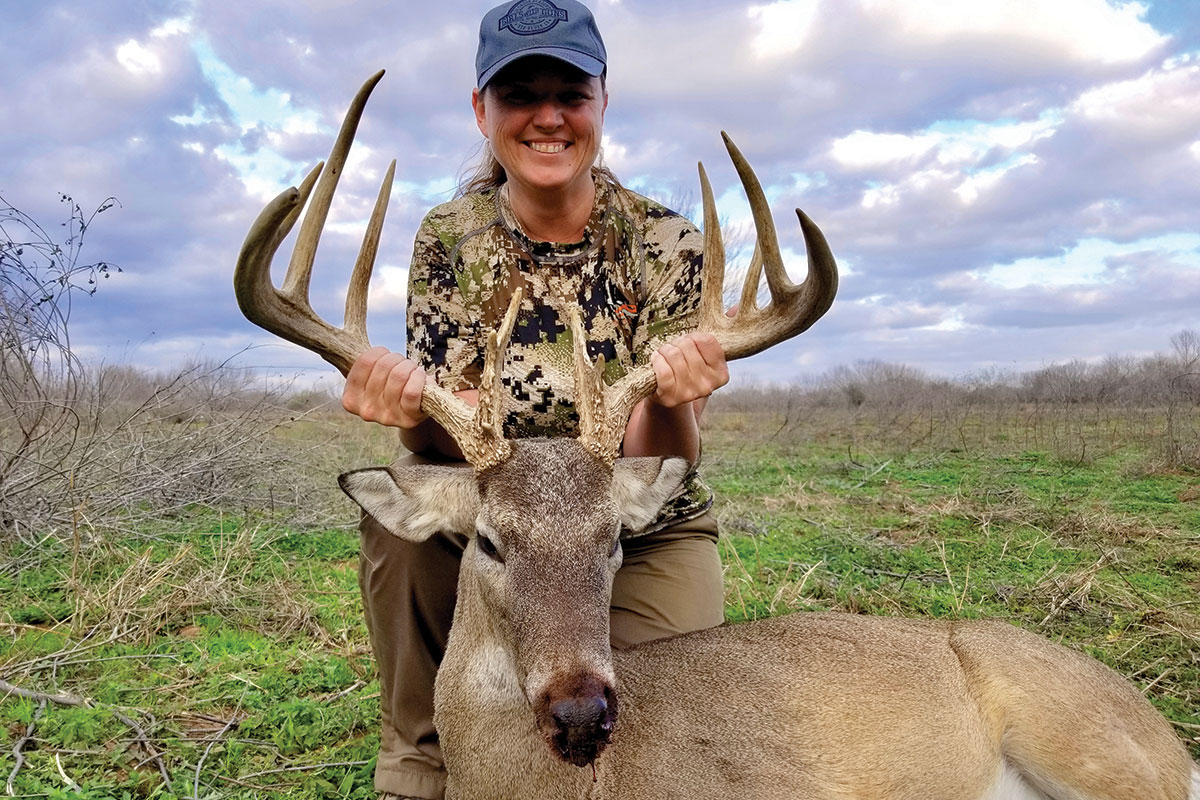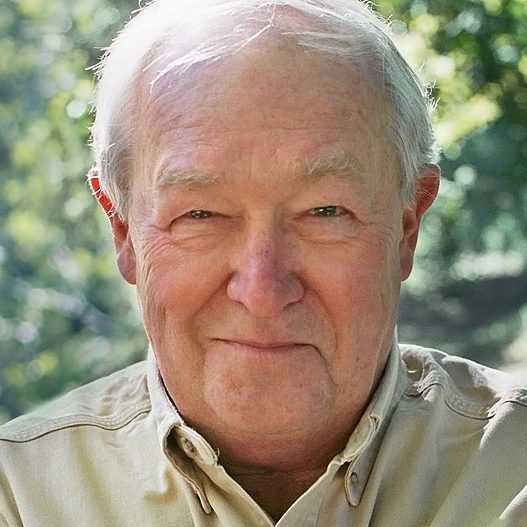In the four centuries after the arrival of Columbus, explorers, traders, and settlers, abetted by Native Americans, pillaged the North American landscape of its wild animal and bird populations for food, fur, feathers, and fun. One of their favorite targets was the white-tailed deer. European bankers who staked trans-Atlantic settler migrations were often paid back with deer hides and beaver pelts. As immigrants poured in, wild venison was cheap protein for pioneer-family pots. Commercial deer hunters sold venison to butchers, restaurants, railroad crews, and lumber camps. By 1890, a pre-Columbian deer population thought to number more than 30 million had been reduced to an estimated 350,000. Many states—Illinois, Indiana, Ohio, Pennsylvania, and Vermont among them—had no whitetails left at all.
By the 1980s, whitetail populations started to explode, especially in suburban, exurban, and rural-sprawl areas where more people were living and where hunting was highly restricted.
Fast forward to the end of the 20th century and, after one of America’s great wildlife comeback stories, white-tailed deer had become seriously overabundant across much of their historic range, inflicting mounting damage on people, crops, and forests. By the 1980s, whitetail populations started to explode, especially in suburban, exurban, and rural-sprawl areas where more people were living and where hunting was highly restricted.
Hunting had long been the primary management tool for deer, yet even in many areas where it was allowed, hunters had become unable to stabilize, let alone reduce, whitetail numbers. New control methods were slow to be tried. Instead of five to 15 deer per square mile, as was common in rural areas, sprawl was accommodating 40, 80, or even in excess of 100 deer per square mile. Such places provided plenty of forest edges for hiding, feeding, watering, and bedding. They also contained lots of people against hunting. As the National Zoo’s William J. McShea put it, sprawl became “deer nirvana.”
By 2000, American drivers were hitting 3,000 to 4,000 deer per day. Whitetails themselves were also a mass transit system for ticks carrying Lyme disease and other bacterial infections. Their browsing habits were causing billions of dollars in damage to crops and landscaping. They were cleaning out the understories of forests—eating away tree seedlings to the point of stopping forest regeneration in some areas. When forest ground plants are eaten away, insects that baby birds depend on become scarce. With native plants gone, invasive species move in.
Tom Rawinski, a U.S. Forest Service botanist in the Northeast, calls overabundant whitetails “the greatest conservation challenge of our time.” In the 2018 summer newsletter of the New York Flora Association, he described the predicament thusly:
This one keystone species, the white-tailed deer, [has] placed millions of forest acres at risk. It has been called the greatest mistake in the history of wildlife conservation … once beautiful forests have become ecological slums with crumbling infrastructures. Forests are no longer resilient. Forests are disintegrating. Sustainable forestry is totally out of the question.
In a 1997 book, The Science of Overabundance: Deer Ecology and Population Management, 42 wildlife scientists listed four criteria for determining when a habitat had too many deer: 1) the population threatens human life or livelihood; 2) it depresses densities of favored species, such as songbirds; 3) it becomes too populous for its own good; 4) its numbers cause ecosystem dysfunction. Whitetails fit the criteria.
Deer had become demonized as a scourge, called long-legged rats in some places and mountain maggots in others. “Forgive us if you are among the millions of gardeners, farmers, bird-watchers, drivers, fence builders, claims adjusters, body-shop operators, roadkill scrapers, 911 dispatchers, physical therapists, and chiropractors who know this already,” began a 2005 editorial in The New York Times. “White-tailed deer are a plague.”
Cervine Sprawl
If deer have become a plague, then decades of human decisions about how to manage them are responsible for helping spread the epidemic. By the early 20th century, court rulings, new laws, and principles handed down over time propelled a budding conservation movement. The tenets that developed became known collectively as the North American Model of Wildlife Conservation. Commercial hunting was outlawed. Wildlife became a public trust available to all citizens under rules set by governments. Deer hunting was confined to strict seasons and bag limits. So-called “buck laws” mandated that does be spared to reproduce. The goal was to rebuild the herd. It worked. Healthy whitetail populations slowly returned. By buying licenses, hunters paid states for the right to do what wildlife biologists wanted done: manage the herds at sustainable levels that hunters liked and others accepted.
But society-level transitions were slowly changing many circumstances: where people lived, how they lived, what they thought about wildlife and nature, and how they perceived animal welfare. All of these factors helped create a catalyst for whitetail overabundance.
Demographic changes were significant. Early conservationists didn’t envision sprawl. Until the end of World War II, the idea that people would abandon their towns and quit their farms for a home in a cul-de-sac off some exit ramp or on a rural road didn’t make much sense. Never in history had people lived this way. But from the post-war Levittowns on the edges of cities, people moved farther and farther out on improved roads in affordable cars burning cheap gasoline. By 1960, we were about evenly split: one-third urban, one-third rural, and one-third suburban. By the 2000 Census, more than half the population—an absolute majority for the first time—lived not in cities or on working farms but in this vast middle muddle called sprawl. Which is not a bad place to live if you’re a person, or a deer.
By sprawling out, we encroached on wildlife habitat—but that’s only half the story. As wildlife populations multiply and spread, many wild creatures encroach right back. The reason is simple: Our habitat is often better than theirs. We offer up plenty of food and water. We plant grass, trees, shrubs, and gardens. We put in ponds and put out birdseed, mulch, and garbage. We fill up dumpsters. All of this amounts to a giant buffet for all sorts of critters. And it’s the reason that sprawl’s biological carrying capacity—that is, the population limit the food and habitat can sustain—is far greater than in an unpeopled rural area.
Society-level transitions were slowly changing many circumstances: where people lived, how they lived, what they thought about wildlife and nature, and how they perceived animal welfare. All of these factors helped create a catalyst for whitetail overabundance.
Sprawl Man offers wildlife ample shelter and protection, too. While much of the privately owned American landscape is papered with “No Trespassing” and “No Hunting” signs, in the sprawl they are ubiquitous. Suburban towns, townships, and even whole counties have adopted firearms and hunting restrictions. For example, in Massachusetts, which is the third most densely populated state, it’s not legal to discharge a firearm within 150 feet of a hard-surfaced road or within 500 feet of an occupied building without the owner’s written permission—which isn’t easy to get in the burbs. These two restrictions alone put almost two-thirds of the Bay State effectively off-limits to hunting. And almost half of the state’s 351 municipalities impose further prohibitions and restrictions, including on bow-and-arrow hunting. Lots of states have rules like this. They create huge patchworks of deer sanctuaries.
Many of these restrictions came along before deer populations ballooned. Public safety was the aim. But hunters are relatively safe. These days, while firearms kill nearly 40,000 people a year in this country, hunters kill only about 50—usually each other, in cases of mistaken identity. Deer-vehicle collisions kill upwards of 300 people and hospitalize nearly 30,000 more annually.
Research suggests that the biggest predator of deer since the end of the last Ice Age has been man; Paleoamericans and Native Americans probably killed more deer than all other predators combined, including cougars and wolves. What this means is that restrictions imposed on human predators in just the last few decades have for the first time in 11,000 years put giant swaths of the whitetail’s historical range off-limits to its primary predator.
Where allowed in the United States, some 11 million hunters kill about 6 million deer annually—not nearly enough to stabilize, let alone dent, populations. The rule of thumb is that just to keep an area deer population stable, two-thirds of the females have to die annually. Even if you count deer that die of other causes—such as vehicle collisions, disease, and predators—it is clear that many more deer must die to actually reduce the population.
Deer-vehicle collisions kill upwards of 300 people and hospitalize nearly 30,000 more annually.
But whitetail reduction is made even more difficult by today’s conflicting attitudes about wildlife and animal welfare. Many people simply don’t believe there are too many deer. They like seeing these elegant ungulates around. They are often against killing them. They sometimes argue that deer problems are really people problems that can be solved by driving carefully, fencing off landscaping, checking for ticks, and so on. They often campaign to save deer from hunters more vigorously than those who want to save forests, crops, and gardens from deer.
At any one time, literally hundreds of communities are divided and fighting over whether they have too many deer, and, if so, what to do—or not do—about it. These fights usually take several years, during which time the deer damage worsens. The first question communities confront is: Is there a problem? That question alone can stall action for a long time. One side will ask: How many deer do we have? It’s a good question—but is it worth spending thousands of tax dollars doing surveys, including helicopter infrared flights, to determine numbers? After that, some people will inevitably question the validity and accuracy of the surveys. Any argument that stops or postpones the prospect of deer control is used. Lawsuits are threatened, and sometimes filed. It takes only a few people using these tactics to put off dealing with the problem by denying it exists.
Even after a community decides it has too many deer, residents divide over lethal versus non-lethal control. Contraception always comes up because it holds the promise of sparing animal lives. (There’s no easier way to raise money in this country than to tell donors you can save animals from human harm.) In any case, deer contraception is a humane alternative to killing—if only it worked. It may be tomorrow’s silver bullet. But practical and affordable deer contraception was “just around the corner” 30 years ago. It still is.
You can surgically sterilize does—that is, put them on an operating table and remove their ovaries—like they’re doing in East Hampton on New York’s Long Island. That costs around $1,200 per animal. All you need is deep pockets. Likewise, New York City is funding a $3.3 million first-in-the-nation experiment to perform vasectomies over three years on every one of the more than 1,000 bucks on Staten Island.
Hunter groups are often not much help. Hunters like seeing lots of deer—especially on the opening morning of hunting season. Measures to reduce overall deer populations irk some. Keeping hunters happy is important because the money they spend on licenses is a significant source of state wildlife management funding. And that money is declining as baby-boomer hunters die off and their kids don’t take up the sport.
Many communities eventually decide that the lethal control option is the only feasible course, and they think that all they have to do is allow hunting and their deer problems will disappear. Not so, says Anthony J. DeNicola, president of White Buffalo, a nonprofit organization that specializes in all types of deer reduction, including culling and sterilization.
The problem, DeNicola says, is that hunters see “a recreational opportunity and not a management solution.” This can result in bad management, he says, adding: “Hunters are so spoiled now that any herd reduction below 40 to 50 deer [per square mile] is unacceptable.” Whitetails are so plentiful these days that very little real “hunting” is required to bag one. As a result, hunting skills have lapsed. Only serious hunters—say, those after a particular wily buck—need them. State wildlife managers have tried various measures to increase hunter deer harvests, such as lengthening the hunting season and increasing bag limits, with limited success. In some states, a hunter can kill a deer a day for more than 100 days. But why would they? Once a hunter’s freezer is full and a neighbor befriended with a gift deer, killing more deer seems gratuitous. You can donate deer to Hunters for the Hungry or other such programs, but money for butchering costs is in short supply.
Depredation permits, issued to reduce deer damage to crops and landscaping, are on the rise. But more drastic measures, such as offering deer bounties, have not been raised—at least not yet.
Exceptional Sales
More than a century after the North American Model of Wildlife Management came to the fore, there seems to be one clear incentive that could keep hunters hunting and help communities pay for the costs of hiring sharpshooters: once again allow commercial sale of wild venison.
Vermont permits this to a very limited degree. A little-known provision in a 1953 state law grants the following: “A person shall not buy or sell a wild deer within the state except during the open season and for twenty days thereafter” (emphasis mine).
Suffice to say, Vermont still does not have a booming market for venison even after the law has been on the books for more than half a century. Limited commercial-sale experiments have been proposed in other states but have met strong resistance.
Perhaps the lack of progress on the commercialization front is why culling by sharpshooters is an increasingly common, but expensive, use of taxpayer dollars—at around $300 per deer. It usually involves teams of specially trained shooters using rifles, often .223 caliber, equipped with night-vision scopes and silencers. Groups like White Buffalo carry out such culls, as does the U.S. Agriculture Department’s Wildlife Services branch. Besides culling costs, communities must also pay butchers to process the dead deer so that the venison can be donated to food pantries.
There is a general reluctance to get out in front on the commercialization issue, as if doing so signals a betrayal of the entire North American Model of Wildlife Conservation. But we must face the fact that other incentives to get people to kill more deer haven’t worked.
But what if that venison could be produced by trained residents and then sold at local farmers markets? Suppose a town hires sharpshooters to conduct an initial culling and at the same time trains local residents—police, firemen, hunters, and others familiar with firearms—to conduct future culls. The first year, perhaps, the locals would observe and learn techniques. The second year, the locals would set up the cull under professional supervision. The third year, the locals would be on their own.
Culling costs would gradually go down, and selling the venison locally would further offset costs by tapping into its locavore appeal. As celebrated hunter and writer Steven Rinella put it in “Locavore, Get Your Gun,” a 2007 column in The New York Times, such venison could accurately be labeled “free-range, grass-fed, organic, locally produced, locally harvested, sustainable, native, low-stress, humanely slaughtered meat.”
A great irony is that an estimated 85 percent of the venison sold in restaurants and at meat counters in the United States is imported from red deer farms in New Zealand. And it isn’t cheap—the ground variety sells for three to four times the price of ground chuck.
Why not substitute local American wild venison for the New Zealand imports? Because doing so would violate a key tenet of the North American Model, which eliminated commercial markets for wild game, especially meat. The model has seeped into the DNA of state and federal wildlife managers and scientists, and for many, altering it in any way would be akin to rewriting the Ten Commandments: “Thou shalt not kill, except in certain circumstances …” At national conventions, just bringing up the idea of commercial sale was long considered to be so heretical that proposed forums were squelched.
Of course, this tenet of the model is rife with exceptions already. Fur bearers can be bought and sold. Ditto for deer parts—antlers, skulls, and hides. Deer urine is sold. Wild fish are commercially traded.
In 2011, the Wildlife Society Bulletin, a peer-reviewed scientific quarterly, published a forward-looking article: “Regulated Commercial Harvest to Manage Overabundant White-Tailed Deer: An Idea to Consider.” Its authors were seven academic and government wildlife scientists. They urged pilot projects, carefully circumscribed, to see if commercialization might be a useful new tool in the deer-management toolbox. The silent reaction was deafening.
The subject did not even get on the agenda at the Wildlife Society annual meeting until 2013. So nervous were its organizers that a professional facilitator was hired to maintain decorum. Not necessary, as it turned out. About 70 attendees talked and listened for four hours—many open to the idea, albeit with reservations.
Yet virtually nothing has come of the idea in the last five years. To implement even minor experiments in commercialization would require the cooperation of state fish and wildlife departments, government food safety agencies, legislatures, governors, hunter groups, and local communities—all of whom are divided within and without. Here and there efforts have been made, proposals put forward, even legislative bills introduced. Still, nothing.
There is a general reluctance to get out in front on the commercialization issue, as if doing so signals a betrayal of the entire North American Model of Wildlife Conservation. But we must face the fact that other incentives to get people to kill more deer haven’t worked. A failure to try commercialization year after year as deer problems continue to escalate amounts to kicking the can down the road—inaction that’s not going to benefit the future of wildlife management in America nor the landscapes and communities that live with these wild species.







